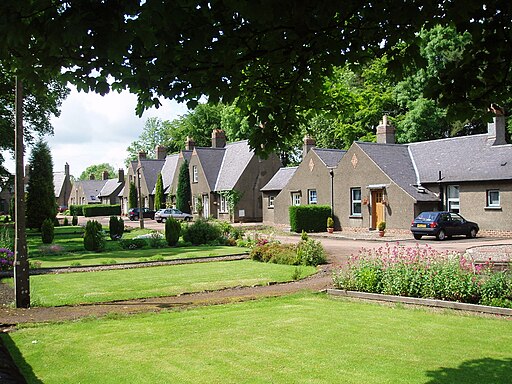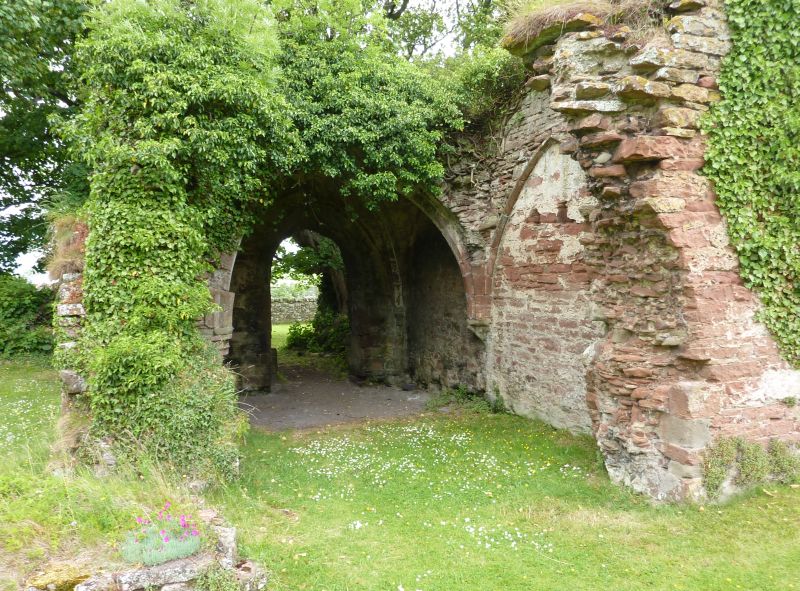Search the Gazetteer
Are the results not as expected? Modify your search term or change the scope to refine your search.
Results for a place that exactly matches ...
Fife
Fife, Scotland
Fife is a maritime county lying between the Firth of Forth and the Firth of Tay. "The Kingdom of Fife" sobriquet is a reference to the Pictish kingdom from which the county evolved. Fife is at its most urban at its most southerly point, where the Forth Bridges cross the Firth into the county. Dunfermline, the largest town, is in this area, as is the Royal Navy's major base and dockyard at Rosyth. Inverkeithing is an ancient port. North Queensferry was reputedly established by St Margaret, wife of Malcolm III, to ensure ferry crossings for pilgrims heading to St Andrews. Further up the coast is Kirkcaldy, an ancient trading port. Inland, the Lomond Hills lie in the centre of Fife. Glenrothes is a post-war new town. Cupar has a 17th-century mercat cross. On Fife's "East Neuk" is St Andrews, seat of one of Britain's oldest universities and the home of the Royal and Ancient Golf Club - and of the game itself.
Portrait of Fife.
Place Type: Historic County
Lat, Long: 56.264885,-3.13271
Grid Reference: NO299086
Country: Scotland
GBPNID: 305794
Entry Type: Main listing (P)
URL: https://gazetteer.org.uk/place/Fife
 Explore Fife on Wikishire
Explore Fife on Wikishire
Fife's most urban area is in its south-west where the Forth Bridge and the Forth Road Bridge cross into the county from West Lothian. Dunfermline, the largest town, is in this area, and the Royal Navy's major base and dockyard at Rosyth.
Dunfermline stands on high ground three miles from the Firth of Forth. It is a former capital of the Kingdom of Scotland, seat of the royal court and an important ecclesiastical centre. Dunfermline Abbey is the burial place for many kings, including Robert I and Saint Margaret, Malcolm III's English queen. Here are remains of the Royal Palace of Dunfermline, birthplace of King Charles I. The wealthy businessman and philanthropist Andrew Carnegie never forgot Dunfermline, his home town. He was the central figure in promoting its early 20th-century urban renewal and he richly endowed the town.

Dunfermline Abbey
South of Dunfermline, Inverkeithing has been a port since time immemorial. North Queensferry, between the Forth Bridge and the Forth Road Bridge, takes its name from Saint Margaret, the wife of King Malcolm III, who was said to have established the village to ensure there would be regular ferry crossings across the Firth for pilgrims travelling to St Andrews. Along the coast eastwards is Dalgety Bay, a 1960s new town named after an older village. Further east is Burntisland with a popular beach and the 15th-century Rossend Castle. Nearby Cowdenbeath grew up around the extensive coalfields of the area.

The Forth Bridges from North Queensferry
Further up the coast in the waist of the shire is Kirkcaldy, an ancient trading port and the home town of the economist and philosopher Adam Smith. Kirkcaldy has long been nicknamed the Lang Toun in reference to the 0.9 mile main street of the early town. One of Scotland's finest museums, the Kirkcaldy Museum and Art Gallery contains a notable collection of paintings by the Scottish Colourists and a display of the town's industrial heritage.
Glenrothes was designated in 1948 as Scotland's second post-war new town. The new town was planned to sit on agricultural land between the three existing towns of Leslie, Thorton and Markinch, which are all still slightly separate from the new town. The different "precincts" of Glenrothes are named after the pre-existing hamlets (e.g. Woodside, Cadham), the farms which once occupied the land (e.g. Rimbleton, Caskieberran, Collydean) or historical stately homes in the area (e.g. Balgeddie, Balbirnie, Leslie Parks) The area of the original Cadham Village is now a conservation area.

Cadham Village
The Lomond Hills lie in the centre of Fife, east of Kinross-shire and north of Glenrothes. At 1,713 feet, West Lomond is the county top. The town of Falkland stands at the foot of the Lomond Hills. Falkland Palace (NTS), begun in 1500 by King James IV, is the best example of French-influenced Renaissance architecture in the United Kingdom. The palace was built to accommodate the royal Court when they came to hunt in the nearby forests.

Falkland Palace
Levenmouth is a conurbation comprising the coastal towns of Buckhaven, Leven and Methil, and a number smaller towns, villages and hamlets inland. It lies where the River Leven meets the Firth of Forth.
The north-east corner of Fife is recognised throughout Scotland as the "East Neuk" (or corner) of Fife, small settlements around sheltered harbours, with distinctive vernacular "Dutch" or craw (crow) stepped gabled and stone-built architecture. The fishing industry on which the East Neuk settlements were built has declined with the main fishing fleet now operating from Pittenweem and the harbour in Anstruther being used as a marina for pleasure craft.
St Andrews, a former monastic and archiepiscopal centre, is also the seat of one of Britain's oldest universities. The Royal and Ancient Golf Club of St Andrews is regarded worldwide as the "Home of Golf". To the east of the town centre, lie the ruins of the Cathedral of St Andrew. The picturesque ruins of St Andrews Castle are situated on a cliff-top to the north of the town. The castle was first erected around 1200 as the home of the bishops and later archbishops for use as a palace, prison and fortress.

The Royal and Ancient Gold Club, St Andrews
North of St Andrews is the small town of Leuchars. The 12th-century St Athernase Church is one of the finest surviving examples of an unaisled Romanesque parish church in Scotland.

St Athernase Church, Leuchars
Tayport lies close to the north-east tip of Fife. To its east is the vast Tentsmuir Nature Reserve, an area of forested dunes.
The Fife coast along the Firth of Tay has few settlements. Newport-on-Tay lies at the eastern end, close to the two bridges which cross the Firth. Newburgh lies at the western end. Lindores Abbey was a Tironensian abbey founded in 1191. Now a reduced ruin, it lies on the banks of the Tay close to Newburgh.

Lindores Abbey
The town of Cupar lies inland equidistant between the Forth and the Tay. The historic hub of the town is the junction of Bonnygate and the Crossgate, where the town's mercat cross (1683) is located. Hill of Tarvit (NTS) is a 20th-century mansion house with ornate gardens, just south of Cupar. Between 1905 and 1906, the house and gardens were remodelled by the renowned architect Sir Robert Lorimer incorporating French and Chippendale-style furniture, porcelain and paintings collected by F B Sharp.

Hill of Tarvit
Legend claims that the Picts were united under the eponymous Cruithne, on whose death the realm was divided into seven under-kingdoms or provinces, one of which was Fife. The name is recorded as Fib in a charter of 1150 and Fif in 1165. Fife was an important royal and political centre from the reign of King Malcolm III onwards. Malcolm had his principal home in Dunfermline and his wife Margaret was the main benefactor of Dunfermline Abbey. The Abbey replaced Iona as the final resting place of Scotland's royal elite, with Robert I amongst those to be buried there. A new royal palace was gradually constructed at Falkland and was used by successive monarchs of the House of Stuart, who favoured Fife for its rich hunting grounds. Fife became a centre of heavy industry in the 19th century. Coal had been mined in Fife since at least the 12th century, but the number of pits increased ten-fold as demand for coal grew. The Forth and Tay rail bridges linked Fife with Dundee and Edinburgh. Modern ports were constructed at Methil, Burntisland and Rosyth.
Portrait of Fife.
Place Type: Historic County
Lat, Long: 56.264885,-3.13271
Grid Reference: NO299086
Country: Scotland
GBPNID: 305794
Entry Type: Main listing (P)
URL: https://gazetteer.org.uk/place/Fife
 Explore Fife on Wikishire
Explore Fife on WikishireFife's most urban area is in its south-west where the Forth Bridge and the Forth Road Bridge cross into the county from West Lothian. Dunfermline, the largest town, is in this area, and the Royal Navy's major base and dockyard at Rosyth.
Dunfermline stands on high ground three miles from the Firth of Forth. It is a former capital of the Kingdom of Scotland, seat of the royal court and an important ecclesiastical centre. Dunfermline Abbey is the burial place for many kings, including Robert I and Saint Margaret, Malcolm III's English queen. Here are remains of the Royal Palace of Dunfermline, birthplace of King Charles I. The wealthy businessman and philanthropist Andrew Carnegie never forgot Dunfermline, his home town. He was the central figure in promoting its early 20th-century urban renewal and he richly endowed the town.

Dunfermline Abbey
South of Dunfermline, Inverkeithing has been a port since time immemorial. North Queensferry, between the Forth Bridge and the Forth Road Bridge, takes its name from Saint Margaret, the wife of King Malcolm III, who was said to have established the village to ensure there would be regular ferry crossings across the Firth for pilgrims travelling to St Andrews. Along the coast eastwards is Dalgety Bay, a 1960s new town named after an older village. Further east is Burntisland with a popular beach and the 15th-century Rossend Castle. Nearby Cowdenbeath grew up around the extensive coalfields of the area.

The Forth Bridges from North Queensferry
Further up the coast in the waist of the shire is Kirkcaldy, an ancient trading port and the home town of the economist and philosopher Adam Smith. Kirkcaldy has long been nicknamed the Lang Toun in reference to the 0.9 mile main street of the early town. One of Scotland's finest museums, the Kirkcaldy Museum and Art Gallery contains a notable collection of paintings by the Scottish Colourists and a display of the town's industrial heritage.
Glenrothes was designated in 1948 as Scotland's second post-war new town. The new town was planned to sit on agricultural land between the three existing towns of Leslie, Thorton and Markinch, which are all still slightly separate from the new town. The different "precincts" of Glenrothes are named after the pre-existing hamlets (e.g. Woodside, Cadham), the farms which once occupied the land (e.g. Rimbleton, Caskieberran, Collydean) or historical stately homes in the area (e.g. Balgeddie, Balbirnie, Leslie Parks) The area of the original Cadham Village is now a conservation area.

Cadham Village
The Lomond Hills lie in the centre of Fife, east of Kinross-shire and north of Glenrothes. At 1,713 feet, West Lomond is the county top. The town of Falkland stands at the foot of the Lomond Hills. Falkland Palace (NTS), begun in 1500 by King James IV, is the best example of French-influenced Renaissance architecture in the United Kingdom. The palace was built to accommodate the royal Court when they came to hunt in the nearby forests.

Falkland Palace
Levenmouth is a conurbation comprising the coastal towns of Buckhaven, Leven and Methil, and a number smaller towns, villages and hamlets inland. It lies where the River Leven meets the Firth of Forth.
The north-east corner of Fife is recognised throughout Scotland as the "East Neuk" (or corner) of Fife, small settlements around sheltered harbours, with distinctive vernacular "Dutch" or craw (crow) stepped gabled and stone-built architecture. The fishing industry on which the East Neuk settlements were built has declined with the main fishing fleet now operating from Pittenweem and the harbour in Anstruther being used as a marina for pleasure craft.
St Andrews, a former monastic and archiepiscopal centre, is also the seat of one of Britain's oldest universities. The Royal and Ancient Golf Club of St Andrews is regarded worldwide as the "Home of Golf". To the east of the town centre, lie the ruins of the Cathedral of St Andrew. The picturesque ruins of St Andrews Castle are situated on a cliff-top to the north of the town. The castle was first erected around 1200 as the home of the bishops and later archbishops for use as a palace, prison and fortress.

The Royal and Ancient Gold Club, St Andrews
North of St Andrews is the small town of Leuchars. The 12th-century St Athernase Church is one of the finest surviving examples of an unaisled Romanesque parish church in Scotland.

St Athernase Church, Leuchars
Tayport lies close to the north-east tip of Fife. To its east is the vast Tentsmuir Nature Reserve, an area of forested dunes.
The Fife coast along the Firth of Tay has few settlements. Newport-on-Tay lies at the eastern end, close to the two bridges which cross the Firth. Newburgh lies at the western end. Lindores Abbey was a Tironensian abbey founded in 1191. Now a reduced ruin, it lies on the banks of the Tay close to Newburgh.

Lindores Abbey
The town of Cupar lies inland equidistant between the Forth and the Tay. The historic hub of the town is the junction of Bonnygate and the Crossgate, where the town's mercat cross (1683) is located. Hill of Tarvit (NTS) is a 20th-century mansion house with ornate gardens, just south of Cupar. Between 1905 and 1906, the house and gardens were remodelled by the renowned architect Sir Robert Lorimer incorporating French and Chippendale-style furniture, porcelain and paintings collected by F B Sharp.

Hill of Tarvit
Legend claims that the Picts were united under the eponymous Cruithne, on whose death the realm was divided into seven under-kingdoms or provinces, one of which was Fife. The name is recorded as Fib in a charter of 1150 and Fif in 1165. Fife was an important royal and political centre from the reign of King Malcolm III onwards. Malcolm had his principal home in Dunfermline and his wife Margaret was the main benefactor of Dunfermline Abbey. The Abbey replaced Iona as the final resting place of Scotland's royal elite, with Robert I amongst those to be buried there. A new royal palace was gradually constructed at Falkland and was used by successive monarchs of the House of Stuart, who favoured Fife for its rich hunting grounds. Fife became a centre of heavy industry in the 19th century. Coal had been mined in Fife since at least the 12th century, but the number of pits increased ten-fold as demand for coal grew. The Forth and Tay rail bridges linked Fife with Dundee and Edinburgh. Modern ports were constructed at Methil, Burntisland and Rosyth.


 Menu
Menu